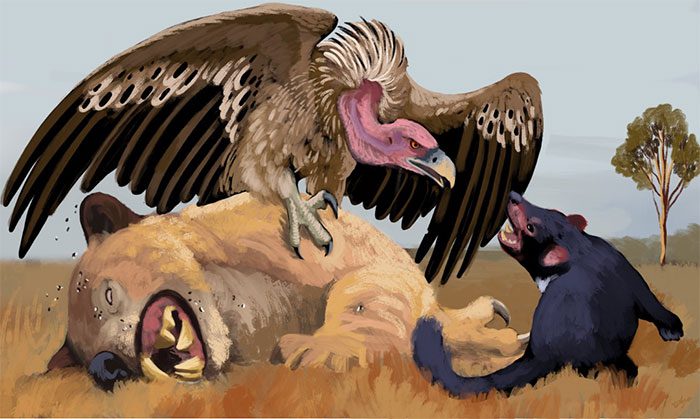The extinct vulture species known as Cryptogyps lacertosus once inhabited Australia during the late Pleistocene epoch. Fossils of this species were discovered in 1901 but were mistakenly classified as eagles.
Scientists studying Ice Age fossils have recently identified vulture species that once lived in Australia.

Reconstruction of the extinct vulture species.
In a study published on July 20, a team of researchers from Flinders University and the South Australian Museum confirmed this discovery. The extinct carnivorous bird, known as Cryptogyps lacertosus, inhabited this Oceanic country during the late Pleistocene epoch.
The fossils of this species were found in 1901 but were misclassified under the eagle category.
In the latest analysis, scientists indicated that the fossils belong to an ancient genus of vultures.
Currently, 16 species within this genus still exist outside of Australia.
The study’s author, paleontologist Ellen Mather from Flinders University, stated that she and her colleagues compared the fossil sample to various predatory birds worldwide.
The results showed that this bird lacked the characteristics of a “hunter” and was neither a hawk nor an eagle. The leg bone characteristics were too underdeveloped to support the muscular system necessary for hunting.
When placing the Cryptogyps within the evolutionary tree, the researchers’ assertions that this bird is a vulture were further solidified.
Based on the leg bones, the research team inferred that the Cryptogyps did not actively hunt but instead fed on the carcasses of animals left behind by other predatory animals.
Researcher Mather emphasized that vultures play a crucial role in the ecosystem by accelerating the consumption of animal carcasses and reducing the risk of disease spread.
This new discovery also revealed that there were many more species of large predatory birds in the past.





















































